IDEAL CONCEPT THAT EXPLAIN LIFE'S FORMATION AND CONTINUITY ON EARTH
In actuality, the existence of the earth and that of humans is one subject matter that has and will always be difficult to explain. The truth is that, as long as experts and research scientists are unable to recreate the Genesis moment in their labs; no amount of religious views (vitalism) will make much sense. At the same time, a staunch religious person will also reject a deity-free explanation (abiogenesis) to how life was formed. With that being said, you'll agree with me that the basis to this unravelled phenomenon might just be the underlying similarity between the two concepts (vitalism and abiogenesis).
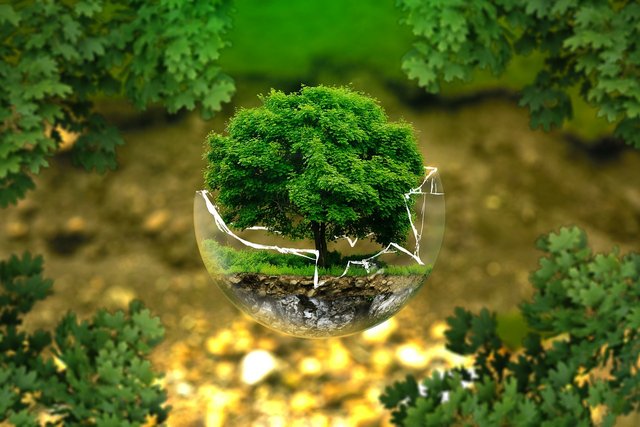 (License: Public Domain]:
Pixabay
(License: Public Domain]:
Pixabay Now, this is what I'm trying to say. Although vitalism showcases the perfect and all-powerful Spirit or Being as the one that spoke everything into existence; on the other hand, scientists believe this to be mere fairytale with no proven facts. So on that note, they came up with the idea that using nonliving materials found on the Earth might somehow explain how the living materials came into existence. According to them, materialistic approaches makes it more precise and logical. This is what prompted researchers to use substances such as fossils in explaining the origin of life. Unfortunately, till date we've not really reached a tangible conclusion with this concept.
All the same, these concepts have one thing in common and that is, both of them believe that the origin of life is as a result of complex changes. In biological science we term this to be SUCCESSION. Well, as we move ahead you'll get to understand better. For now it might interest you to know that just like abiogenesis, vitalism also pinpoint us to the fact that everything we see on earth were actually formed from preexisting substances. For instance, you get to hear stuffs like,
"And the earth was without form, and void; and darkness was upon the face of the deep. And the Spirit of God moved upon the face of the waters". Genesis:1:2
Well, from the above statement, it's quite obvious that right from the beginning there was presence of waters. This goes ahead to support one of the most popular abiogenesis postulate which states that 'life first began in the seas'. As a matter of fact, we all know that water bodies are composed of vast amount of important biotic components. Hence, to some extent, even vitalism believes that life didn't just emanate from nothing. If we should go ahead with the vitalism view, you'll get to see that even living creatures sprung out from these waters. That notwithstanding, in order to avoid sounding all magical we'll go straight to the basis of our discussion. Saddle your seat belt as we take this brief but intriguing journey together.
Succession: The biological concept that illustrates how we got to where we are...
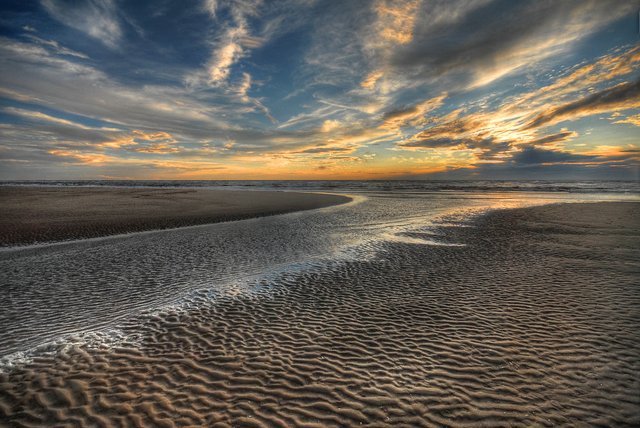 (License: Public Domain]:
Flickr
(License: Public Domain]:
Flickr At this point, for the purpose of clarity I'll try as much as possible to bring this down to the simplest level. I'd love to start by saying that from our elementary knowledge of biology we were told that succession based on biological context happens to be the step by step or gradual replacement of communities until a climax or stable community is formed. Indeed the 'community' we're referring to here is the sum total of living things in a particular habitat. Nevertheless, before we consider the different types of succession, it's pertinent to elucidate on the direct link between succession and the two known concepts that explains the origin of life and continuity on earth.
Like I tried highlighting earlier on, both vitalism and abiogenesis believe that life right from onset passed through series of changes from simple to complex. Unfortunately, as a result of these changes, some of the living organisms that existed early enough became extinct. This goes ahead to stress the fact that gradual replacement has always been there overtime. That's why you can't see dinosaurs no more. So on that note, for individuals to understand the basis of this gradual replacement, it's pertinent to consider the two known types of succession which are primary and secondary succession.
According to experts and ecologists, primary succession occurs in an area where no community existed before, while secondary succession is the exact opposite. The reason why secondary succession is different from primary succession is that in this particular type of succession the community is believed to have existed but at some point became disturbed. Well, starting with the primary succession, let's bring it down to a layman's level. For instance, it might sound quite unbelievable if someone states that a rainforest can be formed out of a river. The truth is that in this case the use of logical reasoning devoid of the knowledge of succession might be deceptive because the above premise to a great extent is very much valid.
Now, let’s make this a little more realistic.
You’ll agree with me that rivers always have boundaries otherwise known as banks. It is worthy of note that the river banks are basically composed of silt depositions. It is as a result of the accumulation of silt in river banks that eventually leads to mud formation. The sad thing is that at this phase the river bank can only support very little life since the soil is already saturated with salt and becomes submerged during high tides. However, just like the popular saying “one’s food is another’s poison”, studies have shown that even in such a weird condition, the red mangrove trees find it extremely favorable.
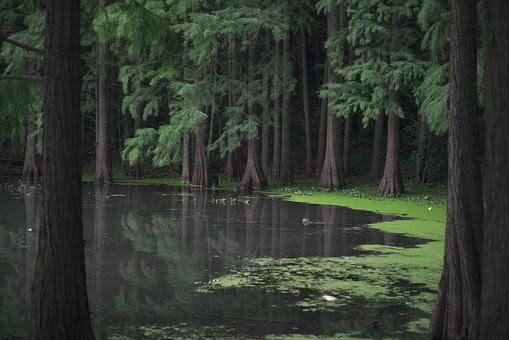.jpeg) (License: Public Domain]:
Pixabay
(License: Public Domain]:
Pixabay Actually, the reason why the red mangrove trees are the first plant to colonize the river banks is due to their possession of special silt and breathing roots. Surprisingly, their ability to survive in the high salt concentrated environment paves way for other mangrove trees to colonize the river bank too. In no time a mangrove swamp is being formed and animals such as birds, insects, snails etc., will come to feed here. How this is made possible is that as the constant accumulation of mud; leaves from the red mangrove trees; and animals continue to raise or uplift the river bank, the red mangrove community is eventually replaced by another community dominated by white mangrove trees which prefers a higher and drier ground.
At the same time, while a higher and drier ground is formed, new muddy banks are also further formed out of the river. The resultant effect of this is that the old muddy river banks which is as at then a higher and drier ground will gradually be converted into inland areas. The cycle continues and after a long time the accumulation of plant and animal remains will trigger upliftment in the land until it's far above high tide level. Then and there will a more normal soil be developed.
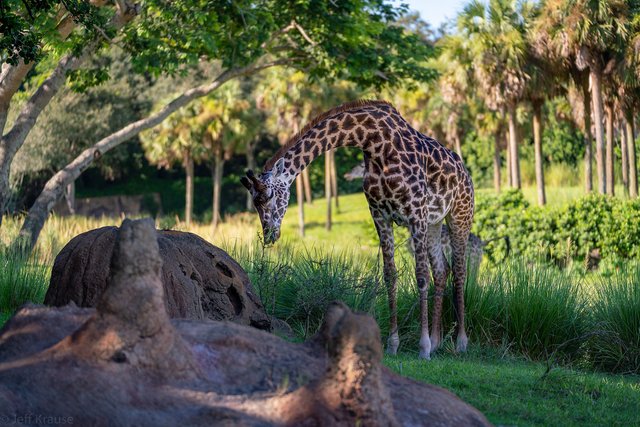 (License: Public Domain]:
Flickr
(License: Public Domain]:
Flickr Subsequently, the white mangrove will also give way to a large number of communities which comprises of different trees, shrubs, herbs, grasses, etc. In actuality, since a normal forest flora is formed overtime; definitely, a normal forest fauna will also be seen. At this stage, we can say that a stable or climax community is formed.
Final thoughts
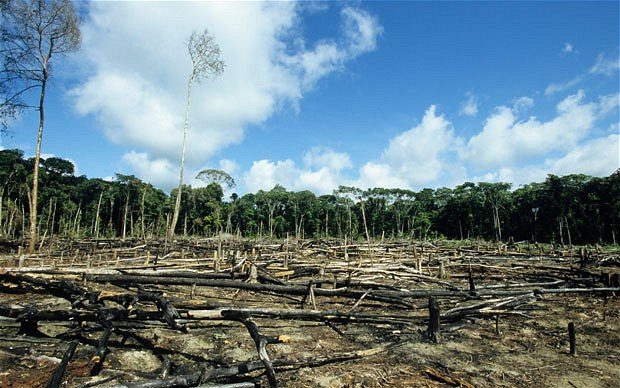 The Earth showing the Van Allen radiation belt (License: Public Domain]:
Wikipedia Commons
The Earth showing the Van Allen radiation belt (License: Public Domain]:
Wikipedia Commons Out of curiosity someone might want to know why we've not really gone deep in explaining the secondary succession. Honestly, in one word I'd say that secondary succession is primary succession that has been disturbed either by factors such as fire outbreak. drought, flood, deforestation, etc. These factors can cause an existing community to be destroyed. On the other hand, the good thing about secondary succession is that it doesn't take thousands of years for the community to reach a stable state quite unlike primary succession. The reason for this is because the soil which takes a longer time to be formed is already present in secondary succession. The only thing needed is for the plants from the surrounding communities to replenish and revegetate in the disturbed areas.
In essence, I feel it will be out of place for scientific researchers to rule out the importance of primary succession in their quest to unravel the origin of life. So whether you believe it or not, it's quite obvious that life came into existence as a result of complex changes and series of gradual replacements. I sincerely hope you've learned a thing or two from this article. Thanks for doing this with me. Till next time!
To read more about this topic, check out these REFERENCES
Abiogenesis from wikipedia.org
BBC report on the secret to how life on Earth began. Retrieved on the 10th of May, 2019
How did life start here on earth?. Retrieved on the 10th of May, 2019
Origins of life on earth. Retrieved on the 10th of May, 2019
Ramalingam, S. (2011). Modern Biology, 6th Edition. Nigeria: Africana First Publishers Plc, pp. 366-368
All images are from flickr, pixabay, and wikicommons licensed under creative commons and eligible for commercial use.
This post has been voted on by the SteemSTEM curation team and voting trail. It is elligible for support from @curie.
If you appreciate the work we are doing, then consider supporting our witness stem.witness. Additional witness support to the curie witness would be appreciated as well.
For additional information please join us on the SteemSTEM discord and to get to know the rest of the community!
Please consider setting @steemstem as a beneficiary to your post to get a stronger support.
Please consider using the steemstem.io app to get a stronger support.
Thank you
Hello, @yhubi. Your post has been manually curated by Altruistic community and has been resteem.
To get more support from Altruistic, you may use the community tag #altruistic-steem.
If you have any suggestion, wants to know more about us, or wants to appear as a guest author and or curator, join us on the discord community server.
Keep blogging!